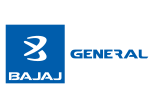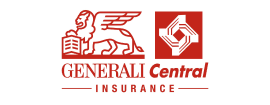Understanding The Basic Principles Of Money Back Policy
Table of Contents
The traditional savings and life insurance programs are known as Money Back Plans. Money-Back Plans give you assured returns at regular periods during the policy term, as opposed to other insurance policies that pay it as a lump sum amount at maturity or in terrible situations such as death. Money Back Policy is one of the greatest investment options for those seeking a low-risk investment vehicle.
The policyholder can save money and invest it to meet short-term goals such as education costs, home needs such as phone bills and energy bills, and so on. Money-Back Plans give you assured returns at regular periods during the policy term, as opposed to other insurance policies that pay it as a lump sum amount at maturity or in terrible situations such as death. Money Back Policy is one of the greatest investment options for those seeking a low-risk investment vehicle. The policyholder can save money and invest it to meet short-term goals such as education costs, home needs such as phone bills and energy bills, and so on.
Features of Money Back Policy
Money-Back Policies have certain unique characteristics that distinguish them distinct from other policies.
-
Payment Methods for Premium Services
Money-Back Plan is available in a variety of premium payment options. Premium payments for issued plans can be made every month, for a short time, or all at once.
-
Death Benefits
If the insured individual dies, the nominee of the insurance receives the death benefits. Death Benefits include the lump sum amount guaranteed under the Money Back Policy as well as any relevant bonus on the policy. However, this benefit excludes survival benefits, which are given to the insured while they are alive and healthy.
-
Maturity Advantage
This reward is provided to the policyholder when the Money Back Policy matures. Maturity Advantages comprises the following elements:
- Amount Assured: This is the total amount selected by the policyholder at the start of the policy.
- Bonus: This includes any relevant reversionary incentives that the insurer has announced. However, it is mostly determined by the company's performance and the Policyholder's dutiful attitude during the tenure.
4. Survival Advantage
The recurring benefits given under Money Back Plans at regular intervals during the insurance term are referred to as survival benefits. These benefits are only paid if the insured lives until the end of the policy period.
-
Additional Benefits
Money return plans are often offered as participation plans with added benefits. Simple reversionary bonuses and compound reversionary bonuses are the two types of bonuses paid under money return schemes. The healthy bonus is given at maturity or death, therefore boosting the plan's benefits.
-
Riders
Riders are additional coverage elements, such as the Accidental Death and Disability Rider. Riders may take advantage of Money-Back Plans by paying extra fees. These riders are available for an extra fee and expand the extent of coverage.
-
Tax Advantages
Policyholders receive tax benefits in addition to other perks like as rider, lending facility, and so on. Premiums paid under Money Back Plans during the policy term, like those paid under other life insurance plans, are deductible under Sections 80C and 10 of the Internal Revenue Code (10D) Insurers benefit from tax-free revenue.
Conclusion
Money Back Policy is an excellent investment option for individuals seeking a long-term investment with high returns. It is especially useful for individuals seeking a low-risk appetite as well as assured returns at regular intervals throughout the policy's lifetime. Money Back Policy is an investment option that allows you to build money. Money Return Policy provides customizable money-back alternatives that are suited to the needs of the policyholder.
Also read:
Common Exclusions Under Money Back Plans
Lesser Known Facts About Money Back Policy
Disclaimer: This article is issued in the general public interest and meant for general information purposes only. Readers are advised not to rely on the contents of the article as conclusive in nature and should research further or consult an expert in this regard.



























































